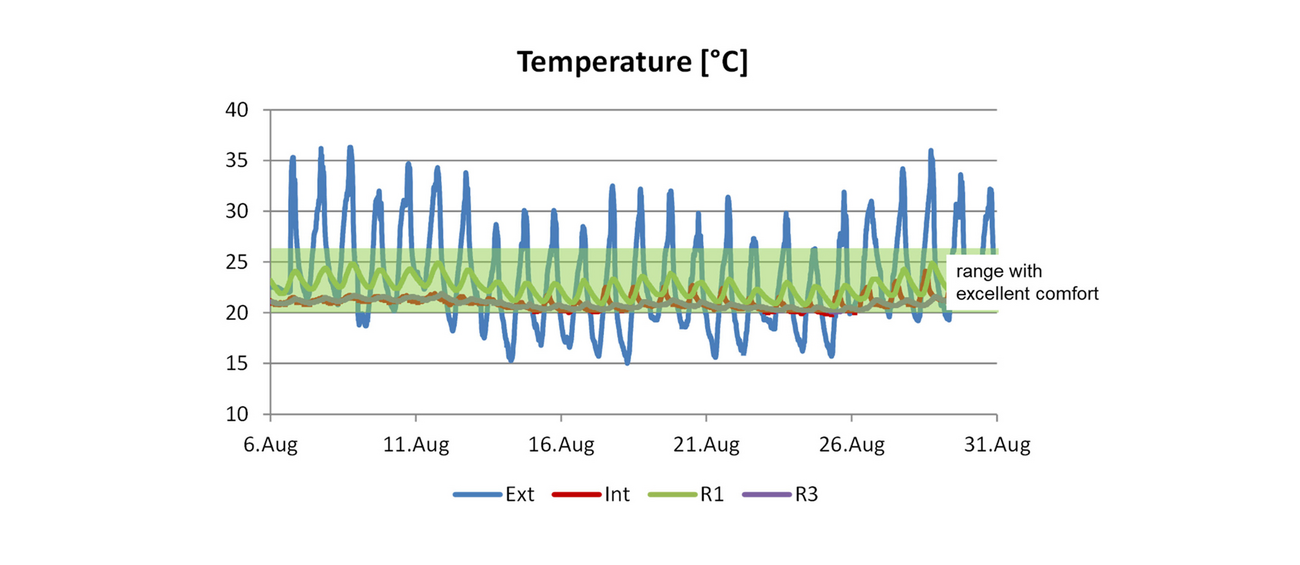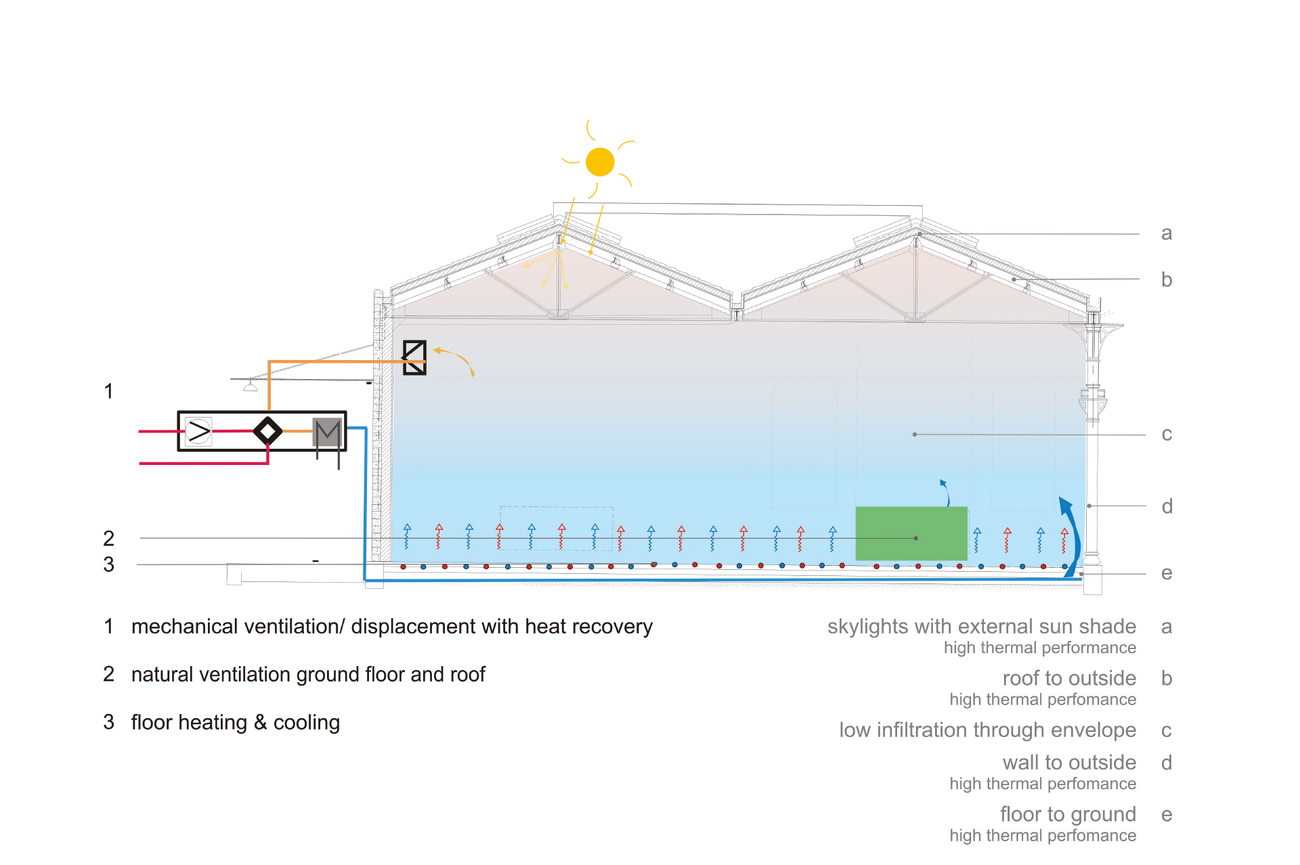LUMA Parc des Ateliers: Les Forges + La Mécanique Générale, Arles, France

The Foundation LUMA promotes artistic creation in the field of visual arts. The projects deal with the environment, culture, education and human rights. Its Parc des Ateliers serves as an interdisciplinary cultural center on an abandoned industrial site area of several hectares, once built for the maintenance and repair of trains belonging to the French national railway SNCF. Five buildings, including the "Forges" and the "Mécanique Générale", welcome visitors all year round for events, such as the "Rencontres de la Photographie" photography festival in summer 2016. The public park designed by Bas Smets connects the existing buildings with a new building designed by Frank O. Gehry. Both architecturally and in terms of energy efficiency and sustainability, the complex was to be outstanding.
Transsolar developed the concepts for climate, comfort and energy, combining low energy needs with a high level of comfort for visitors. The result is a system for the supply of energy from locally available renewable resources with low primary energy consumption, also to minimize the use of nuclear energy. Thanks to the reduced energy demand of the buildings, biogenic combined heat and power generation combined with photovoltaics is sufficient for this purpose.
The two existing buildings mentioned above were renovated by Selldorf Architects and serve as exhibition, library and workshop rooms. Transsolar designed a sustainable climate and energy concept that is deeply sensitive to the context of the Mediterranean site. Basic principles are maximum natural and minimum mechanical ventilation as well as thermal comfort by means of radiant heating and cooling.
Les Forges (2014):
Substantial parts of the roof structure, walls and floors were damaged prior to renovation and climate conditions varied significantly in different parts of the old industrial building. The comfort concept was verified with various daylight, thermal and CFD simulations. The building envelope was fully renovated. The thermal insulation of the roof, walls and windows was enhanced, and the infiltration rate was reduced. The ground and mezzanine floors are equipped with a radiant floor heating and cooling system. Operable windows and skylights in the roof allow efficient natural ventilation and nighttime flushing, which dissipates heat loads and activates the thermal mass of the building. A small mechanical system is used to guarantee plentiful fresh air and energy efficient ventilation in winter. If required, it can also be used to increase comfort during times of peak summer loads as the supply air can be cooled and dehumidified. When in mechanical ventilation mode, fresh air is provided via displacement ventilation. The design provides curators plenty of options for the operation of the building: natural ventilation, mechanical ventilation and mixed mode.
In the summer of 2014, the exhibition spaces in Les Forges were operated with floor cooling and natural ventilation only. Measurements showed that even at high ambient temperatures of 35°C the temperature of the exhibitions spaces always stayed below 25°C.
La Mécanique Générale (2016):
Originally built as the repair shop for SNCF railcars, Mécanique Générale required almost a total rebuild to transform it to an exhibition, library and workshop space. The passive and active design of the building was optimized for daylight, natural ventilation, and thermal comfort. In consideration of the local climate as well as the highly fluctuating visitor densities throughout the year, a sustainable and resilient design was created to satisfy the requirements of the curators and artists. A floor heating and cooling system, integrated into the polished concrete floor of the exhibition areas, creates radiant comfort. The passive and active thermal masses balance out quickly changing loads. The mechanical systems are designed to supply fresh air only. As heating/cooling and ventilation air are separated by design, the air handling systems became very small and, as a result, are fully integrated into the slab. There are no visible mechanical systems in the exhibition spaces. Natural ventilation occurs through fully integrated openings in the façades and roof that allow for fresh outside air to be supplied to the space through displacement ventilation openings in the floor. With this design, all walls are free to be used by the exhibition designers. First readings in July 2016 with 29°C to 31°C ambient conditions indicated excellent conditions in the exhibition spaces. Air temperatures of 25°C were observed even with the floor cooling temporarily covered by wooden panels as part of the exhibition design for the "Recontres 2016".

